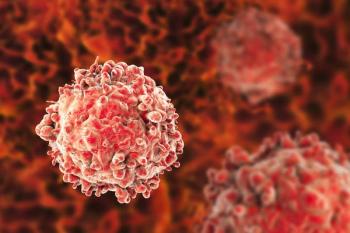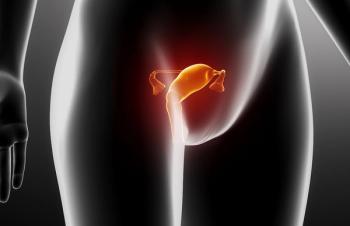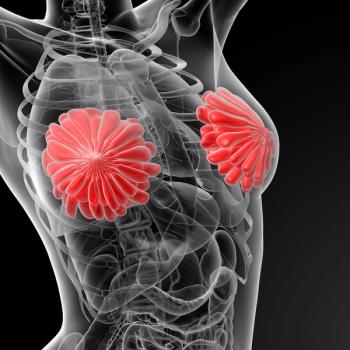
- ONCOLOGY Vol 12 No 6
- Volume 12
- Issue 6
The Challenge of Designing Clinical Trials for AIDS-Related Kaposi’s Sarcoma
The need for an article such as the one by Little et al is a clear sign that progress is occurring in the treatment of AIDS-related Kaposi’s sarcoma (KS). Without such progress, there would be no urgent need to refine the tools currently used to evaluate the activity of KS treatment.
The need for an article such as the one by Little et al is a clear sign that progress is occurring in the treatment of AIDS-related Kaposis sarcoma (KS). Without such progress, there would be no urgent need to refine the tools currently used to evaluate the activity of KS treatment.
The good news is that agents active against KS have been identified and, in some cases, have weathered the FDA review and approval process. The even better news is that advances in our understanding of the events that lead to the development of KS, together with the discovery of agents with the potential to inhibit this process, offer the promise of even more effective, less toxic KS therapies for patients who are now surviving longer with HIV infection.
Although the options for KS therapy are greater now than they were a few years ago, and even better treatment options may soon become available, the bad news is that KS remains as difficult as ever to evaluate. Why should the assessment of a tumor that usually occurs in plain view of the examiner pose such a challenge? Should it require "rocket science" to detect and document the status of easily visible cutaneous tumors and the benefits associated with tumor regression?
Reproducible, Quantitative Lesion Assessment Remains Elusive
The problems involved in KS evaluation are multifactorial. First, as the authors discuss, KS lesions on the skin and in visceral organs often do not lend themselves to reproducible, quantitative assessments. In the case of skin lesions, consistent counting and characterization of large numbers of lesions is hard to achieve, even for those experienced in KS evaluation. The process is not only time-consuming but also subject to error, particularly when large numbers of lesions are clustered together.
Obtaining group consensus on lesion nodularity, as the authors suggest, may be ideal but is impractical in all but the most specialized clinical settings. Even photographs, while desirable, may fail to adequately capture important changes in lesion nodularity or color, and high-quality photographs are difficult, expensive, and time-consuming to obtain, especially in a busy clinic.
A Disease Within A Disease
Another, and perhaps more basic problem, is that KS in an HIV-infected individual is a "disease within a disease." Patients with tumors unrelated to HIV certainly may have comorbid conditions that influence their clinical course and the outcome of their cancer treatment. In patients with AIDS-associated KS, however, the outcome of KS therapy is linked in a fundamental way to the course of the underlying HIV infection.
For example, the development of an acute opportunistic infection during apparently successful therapy for KS may be associated with a sudden but temporary increase in KS lesions, quite possibly because of increased HIV activity and/or an abrupt surge in cytokine production. Should such progression be interpreted as "failure" of KS therapy, or as failure to control the underlying HIV infection?
Quality of life, analgesic require-ments, performance status, and other measures of patient "benefit" should certainly be part of the equation for evaluating new KS therapies. However, linking changes in symptoms and functional capacity specifically to the effects of KS therapy may be difficult in a multisystem disease such as AIDS.
Assessing the Value of KS Therapy
As Little et al conclude, recent experiences with FDA evaluation of new drugs for KS underscore the need to develop better quantitative methods to assess the value of KS therapy. Having attended several of the advisory committee meetings during which the value of these drugs was debated, I have been struck by two things in particular: The often moving, eloquent public statements made by patients whose lives had been positively affected by therapy for KS, and the very difficult and frustrating ordeal the investigators and pharmaceutical companies sometimes encountered in convincing the advisory panel that such benefits had occurred in more than these few self-selected, articulate individuals. Although the patients described reduced edema, improved function, decreased pain, enhanced self-esteem, and the ability to return to work after treatment, documentation of such improvements was not always collected uniformly or prospectively because standardized tools to gather this information had not been developed or validated.
Although "high-tech" methods, such as the one used at the National Cancer Institute (NCI) to measure changes in the volume of pulmonary KS lesions on computed tomographic (CT) scans or the use of sonograms to measure changes in the volume of cutaneous KS nodules,[1] could increase the precision of KS response assessment, quantitation of patient benefit is still decidedly "low-tech." In a 1989 editorial that accompanied the initial AIDS Clinical Trials Group (ACTG) recommendations for KS assessment and staging,[2] Volberding[3] stated that "before we agree on the best agents . . . we must first develop a professional vocabulary that allows us to describe our patients and define the parameters used to compare clinical trials."
Although the ACTG criteria represented a step forward, in 1998, 17 years after the first description of AIDS-related KS, we are still struggling to refine the "vocabulary." The current joint effort by the NCI, FDA, and AIDS Malignancy Consortium (AMC) to introduce greater precision into KS response assessments and to correlate response with tangible clinical benefits, such as pain relief and improved function, is an important step in this direction.
Referral of Patients to Clinical Trials
The most comprehensive evaluation criteria will be of little value, however, if patients are not enrolled in clinical trials of promising new agents. Unfortunately, many patients with KS are not referred to oncologists until quite late in the course of their disease. I strongly endorse the idea that patients with limited, "early" KS (and also relatively early and/or optimally suppressed HIV infection) are ideal subjects in whom to test the feasibility of pathogenesis-based therapeutic strategies.
Although the establishment of the AMC and AIDS malignancy initiatives within the cancer cooperative groups should foster the development of better strategies for treating KS, as well as strategies to prevent the development of KS in high-risk individuals, it is essential that the support of primary HIV care providers, patients, and patient advocacy groups be enlisted. Convincing these groups that early referral and intervention may ultimately yield long-term benefits, and possibly obviate the need to use cytotoxic agents in many patients, should be an immediate priority. This will require more education of nononcologists about KS pathogenesis and its link to HIV infection.
References:
1. Bogner JR, Held M, Goebel FD: Cutaneous ultrasound for evaluation of Kaposis sarcoma. J Acquir Immune Defic Syndr Hum Retrovirol 6:530-531, 1993.
2. Krown SE, Metroka C, Wernz JC: Kaposis sarcoma in the acquired immunodeficiency syndrome: A proposal for uniform evaluation, response, and staging criteria. J Clin Oncol 7:1201-1207, 1989.
3. Volberding PA: Moving toward a uniform staging for human immunodeficiency virus-associated Kaposis sarcoma. J Clin Oncol 7:1184-1185, 1989.
Articles in this issue
over 27 years ago
Radiofrequency Waves Used to Kill Inoperable Liver Tumorsover 27 years ago
ONS Receives Educational Grants to Fund Conferencesover 27 years ago
Salvage Therapy for Ovarian Cancerover 27 years ago
Women’s Dissatisfaction With Body Image Can Affect Smokingover 27 years ago
M. D. Anderson Initiates Aggressive Ovarian Cancer Screening Programover 27 years ago
Gene May Provide Specific Target For Attacking Prostate Cancerover 27 years ago
Medicare Now Reimburses Cancer Patients for Granisetron TabletsNewsletter
Stay up to date on recent advances in the multidisciplinary approach to cancer.
































































































